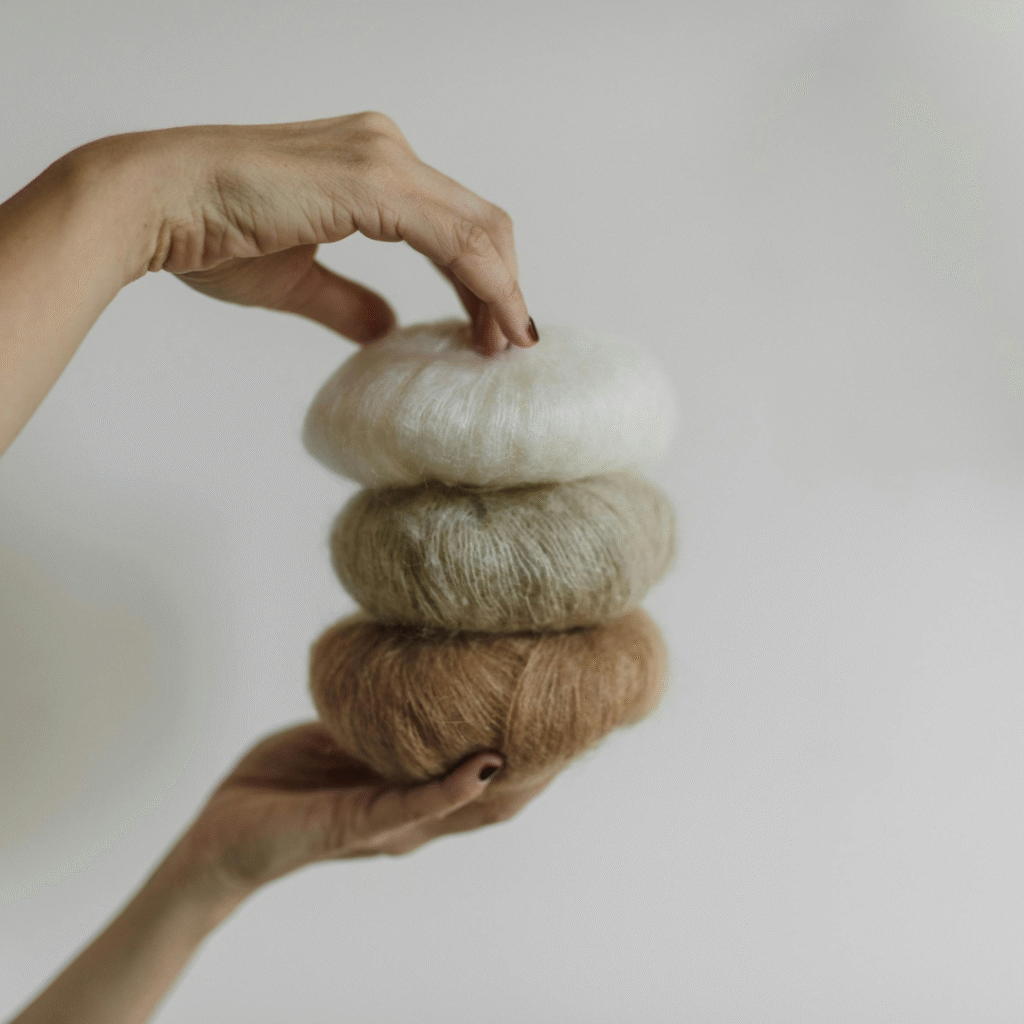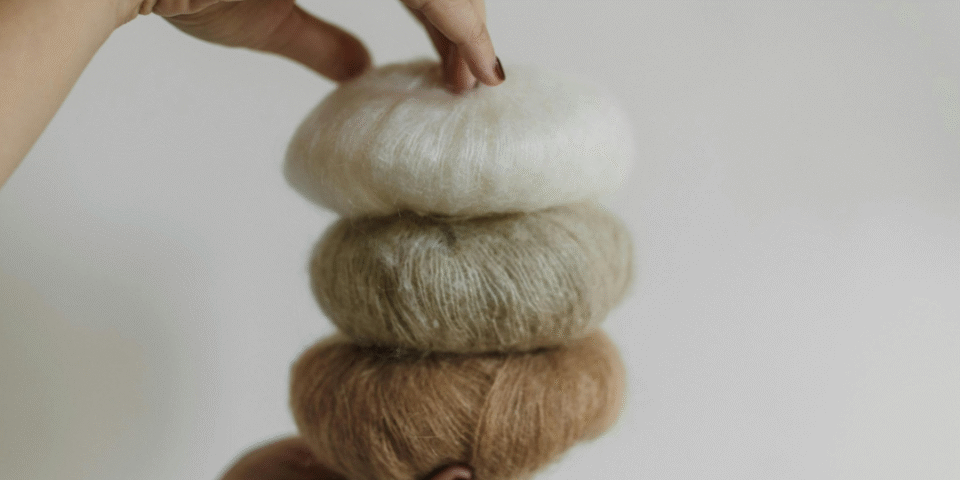Medium weight yarn is one of the most versatile yarn categories used by knitters and crocheters around the world. Medium weight yarn strikes a balance between bulky yarns and fine lace yarns, making it ideal for a wide range of projects. Whether you’re making sweaters, blankets, accessories, or home décor, understanding how to choose, use, and care for medium weight yarn can transform your crafting. This guide will explore everything from definitions and benefits to practical tips and common FAQs.
What Is Medium Weight Yarn?
Understanding Yarn Weights
A yarn’s “weight” doesn’t refer to its heaviness in grams but to its thickness. Medium weight yarn typically refers to yarn classified as Worsted, Aran, or DK (Double Knitting) in different systems. It corresponds roughly to category 4 in the Craft Yarn Council’s standard.

Key Characteristics of Medium Weight Yarn
- Thickness: Not too thin, not too thick—just enough body to create warm, durable fabrics without feeling bulky.
- Gauge: Usually 16–20 stitches for 4 inches (10 cm) using US size 7–9 (4.5–5.5 mm) needles.
- Versatility: Works well in garments, blankets, hats, scarves, home items.
Benefits of Using Medium Weight Yarn
Medium weight yarn offers many advantages:
- Warm but flexible: Keeps warmth without being too heavy for wearables.
- Speedy work: Projects work up faster than with lighter yarns, yet still allows for stitch definition.
- Availability: Very common in yarn stores, with wide color ranges and fiber blends.
- Pliable drape: Depending on fiber, gives good shape and movement.
Choosing the Best Medium Weight Yarn
Fiber Type
The type of fiber influences how medium weight yarn behaves:
- Natural fibers like wool, alpaca: better warmth, breathability.
- Blends (wool + acrylic, cotton + bamboo): balance between softness, durability, and washability.
- Acrylic or synthetic: often easier to care for, great for beginners or items that need frequent washing.
Texture & Finish
Look for texture finishes—plush, smooth, tweed, marled. Medium weight yarn with a smoother finish shows stitch patterns; textured or fuzzy finishes may obscure delicate stitches.
Care & Maintenance
- Machine wash vs hand wash: Always check label. Some medium weight yarns felt under agitation.
- Blocked vs unblocked: Blocking helps even out stitches and improve drape.
- Colorfastness: Especially for dyed wools or bright synthetics.
How to Use Medium Weight Yarn in Your Projects
Sample Project Types
- Sweaters and cardigans
- Blankets and throws
- Hats, mittens, scarves, cowls
- Home décor items like pillow covers or cushion tops
Tips for Working Successfully
Here are some practical tips when knitting or crocheting with medium weight yarn:
- Use proper gauge swatch to avoid surprises.
- Choose needle or hook size based on desired drape: larger for looser, smaller for firmer fabric.
- Use stitch patterns that complement the yarn—ribbing, seed stitch, garter stitch work very well.
- Avoid overly detailed lace in medium weight yarn unless you want dramatic texture.
Common Mistakes & How to Avoid Them
- Using too large needles → loose, shapeless fabric.
- Choosing overly fuzzy yarns without considering stitch definition.
- Skipping the gauge swatch.
- Not pre-washing yarn if prone to shrinkage or bleeding.
Related Article from Velvet North
For a deeper understanding of how medium weight yarn interacts with yardage, texture, and patterns, check out the article Understanding Yarn Weight And Yardage on Velvet North: their detailed breakdown shows how medium weight yarn gauge affects project size and material usage. (velvet-north.com)
If you want inspirations and free tutorials using medium weight yarn, Velvet North also offers patterns, tips, and yarn care advice in their Everything Knitting category. (velvet-north.com)
Comparison: Medium Weight Yarn vs Other Yarn Weights
| Yarn Weight Category | Approximate Gauge (stitches per 4 in / 10 cm) | Best Use Cases |
|---|---|---|
| Fine / Fingering | 22–30 sts | Socks, lace shawls, lightweight summer garments |
| Sport / DK | 20–24 sts | Baby items, light garments, accessories |
| Medium (Worsted/Aran) | 16–20 sts | Sweaters, blankets, hats—sweet spot of versatility |
| Bulky / Chunky | 12–15 sts | Heavy outerwear, quick makes, thick blankets |
FAQ About Medium Weight Yarn
Q1: Can I use medium weight yarn for crochet and knitting both?
A: Yes. Medium weight yarn works well for both crafts. The gauge and hook/needle size will differ, but the material is usually suitable. Many knitters choose medium weight yarn for both knitting and crochet because of its adaptability.
Q2: Is medium weight yarn good for beginner projects?
A: Absolutely. It is often recommended for beginners—it’s easier to handle than thin yarns, shows mistakes clearly (which helps learning), and projects progress faster.
Q3: How much medium weight yarn do I need for a sweater or blanket?
A: It depends on size and pattern. As a rough guide:
- Adult sweater: 1000–1500 yards (900–1400 m)
- Baby blanket: 800–1200 yards (730–1100 m)
Always check pattern yardage and gauge with your specific yarn.
Q4: How to wash items made from medium weight yarn?
A: Follow the fiber’s care instructions. Many yarns will require hand wash and lay flat to dry to prevent stretching or felting. Synthetic blends often tolerate gentle machine wash. Some wool medium weight yarns shrink if washed warm; cool water is safer.
Q5: Can you block medium weight yarn items?
A: Yes. Blocking helps even out stitches and improve drape. Use mild steaming or wet blocking (depending on fiber). For acrylics, block lightly as heat sensitivity can distort shape.
Advanced Techniques & Design Ideas
- Color work: Medium weight yarn is perfect for stranded color work or intarsia—there’s enough thickness to show contrast without bulk.
- Texture play: Use cables, bobbles, post stitches—medium weight yarn holds texture well.
- Mixed weights: Sometimes combining medium weight with lighter yarns for borders or panels adds visual interest.
Sources & Further Reading
- Craft Yarn Council standards for yarn weight categories (definitions, examples).
- Tutorials on gauge swatching and stitch definition difference in medium weight yarn vs lighter or heavier yarns.
- Pattern libraries dedicated to worsted and aran projects.
Why Visit Velvet North
If you’re serious about medium weight yarn and want curated tutorials, yarn reviews, and real-world project walkthroughs, Velvet North has dedicated resources. For example, their article on Understanding Yarn Weight And Yardage is an excellent reference for how medium weight yarn choices affect your final garment or craft. (velvet-north.com)
Also, explore the Everything Knitting section at Velvet North for pattern ideas that use medium weight yarn in garment, accessory, and home décor designs. (velvet-north.com)
Conclusion
Medium weight yarn remains one of the most practical and beloved yarn categories for crafters. Its versatility, warmth, and adaptability make it ideal across a broad spectrum of projects. By choosing the right fiber, texture, stitch patterns, and care methods—and by understanding concepts like gauge and yardage—you’ll get the best results from medium weight yarn in every endeavor.

